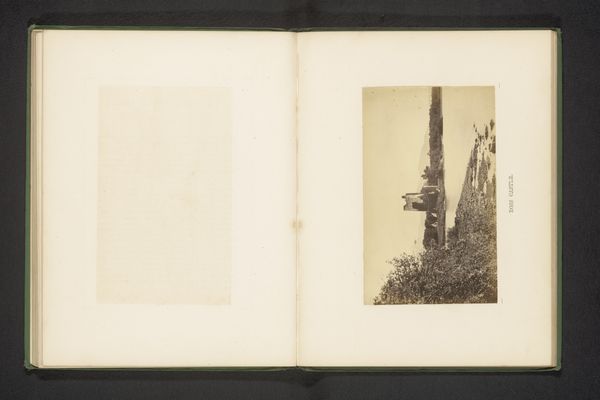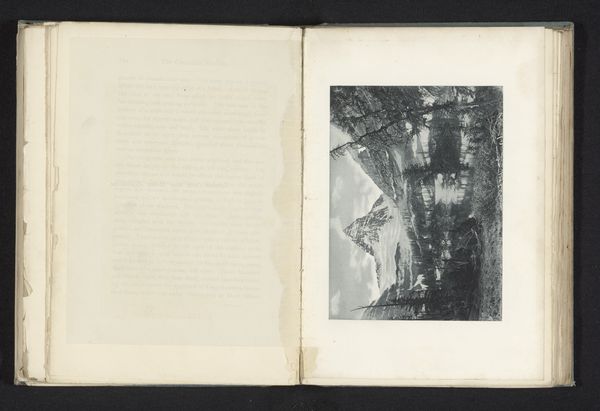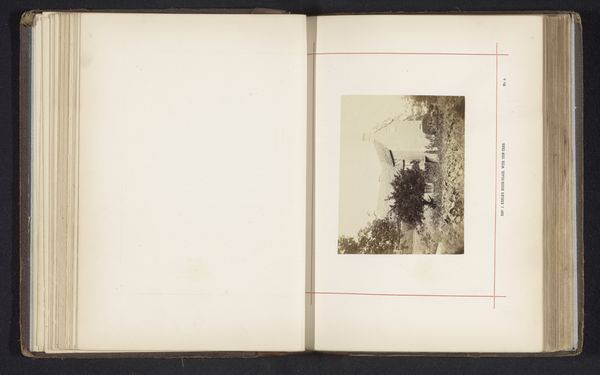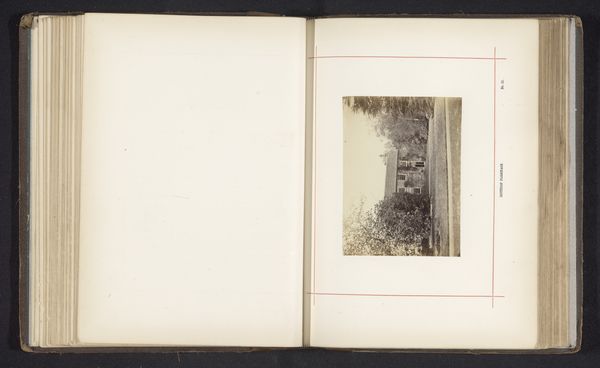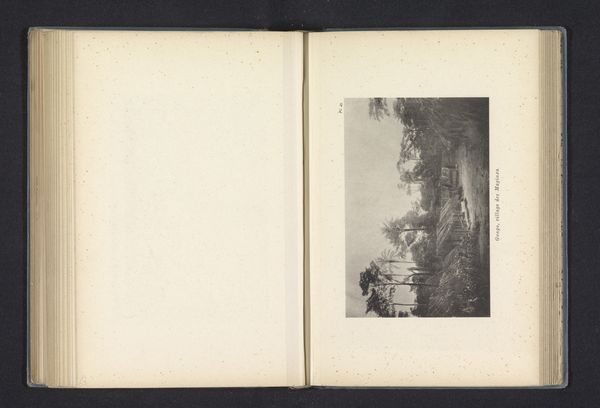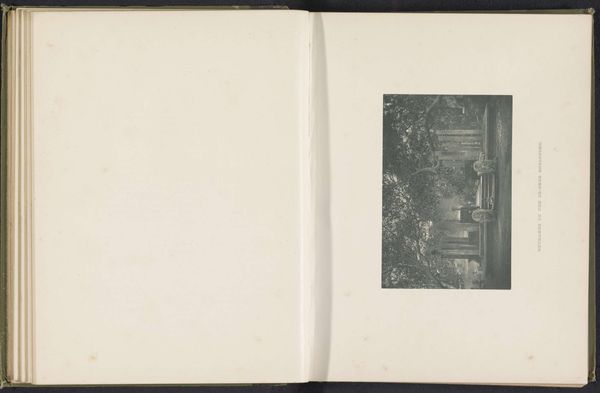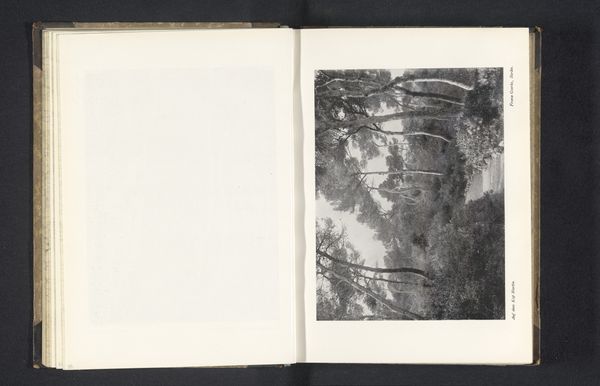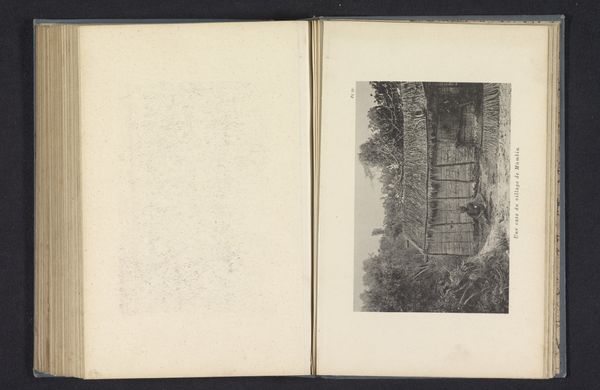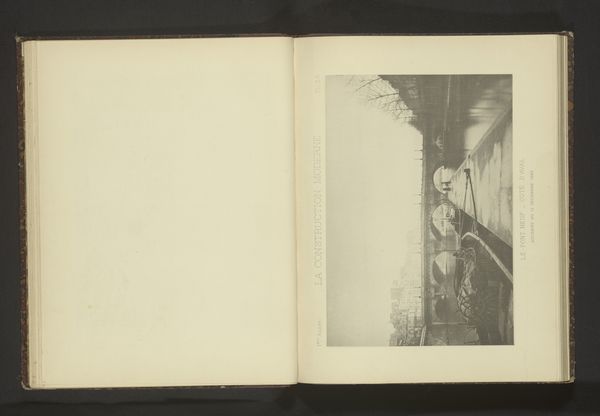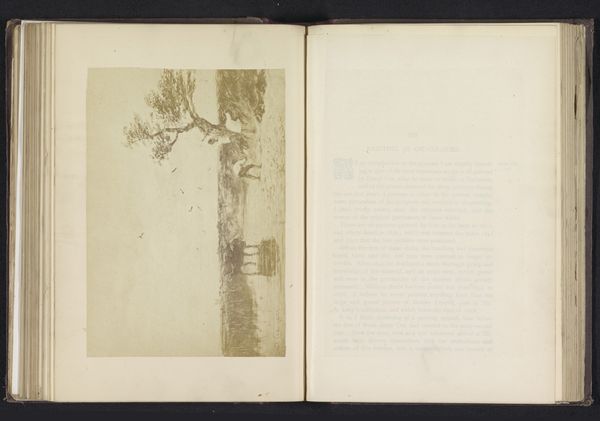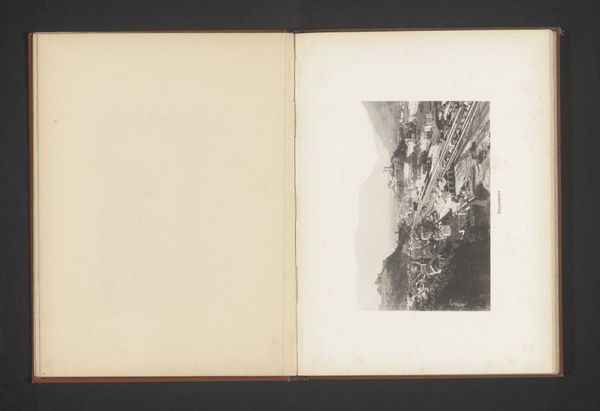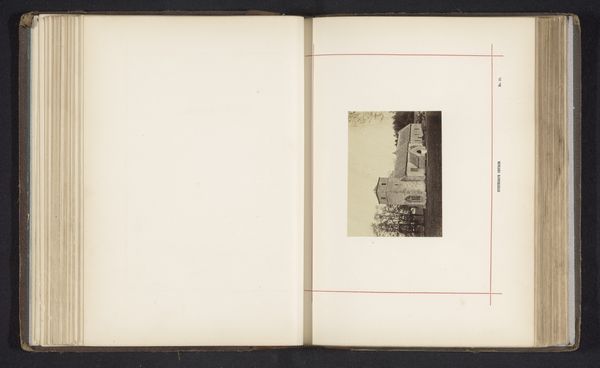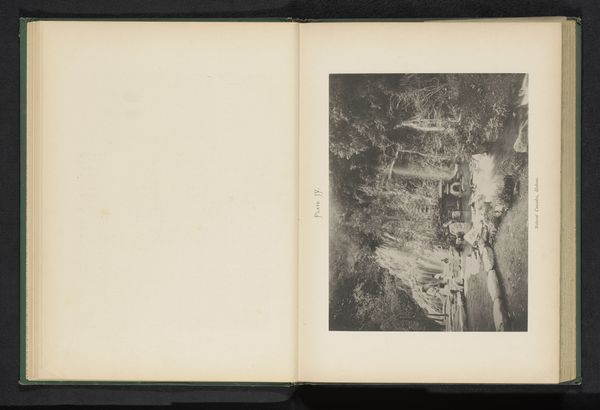
print, photography, albumen-print
#
type repetition
#
aged paper
#
homemade paper
#
paper non-digital material
#
paperlike
# print
#
sketch book
#
landscape
#
paper texture
#
photography
#
personal sketchbook
#
folded paper
#
cityscape
#
paper medium
#
albumen-print
#
realism
Dimensions: height 112 mm, width 183 mm
Copyright: Rijks Museum: Open Domain
Editor: Here we have "Gezicht op een mijn en een brug met stoomkanaal in Californië," or "View of a mine and a bridge with steam channel in California," before 1890 by Britton & Rey, an albumen print presented in an open book. There's a stark contrast between the industrial scene on one side and what appears to be a more serene landscape on the other. How do you interpret this work, given the social context of the time? Curator: This image powerfully encapsulates the fraught relationship between industrial progress and environmental degradation. What was gained by one almost certainly extracted labor and life from another. Notice how the photograph on the right emphasizes the imposing infrastructure—the mine, the bridge, the steam channel. Editor: Yes, it's quite imposing. Curator: It visually asserts dominance over the landscape. Now consider this within the context of late 19th-century America. What narratives of westward expansion, manifest destiny, and capitalist exploitation might be at play here? Whose lands were being mined? Who benefitted from this progress, and who suffered? And even beyond that, what were some common cultural associations or fears in terms of pollution or waste from steam engines? Editor: I hadn't considered it that deeply, but now I see that the photograph normalizes an oppressive relationship between capital and land. I also wonder about worker exploitation as the other hidden, shadowed cost. Curator: Exactly. These kinds of images served to promote the myth of endless resources and inevitable progress, obscuring the harsh realities for many. Editor: I'm struck by how a seemingly straightforward landscape can reveal so much about power and social inequalities. Thanks for highlighting that. Curator: And thank you for opening yourself to it. It’s through questioning and contextualization that we can unlock the true potential of historical images.
Comments
No comments
Be the first to comment and join the conversation on the ultimate creative platform.
